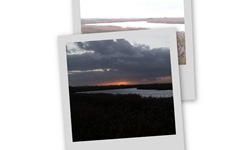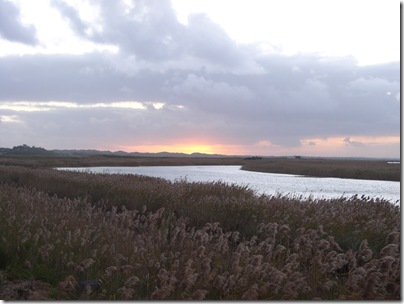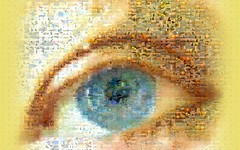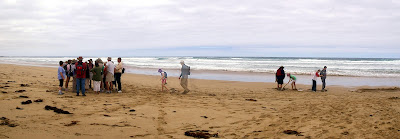
I am guessing every digital camera owner has come across this dilemma, as soon as they take any landscape photographs. If you point the camera slightly down the exposure will give you nice detail in the foreground but the sky will be washed out (almost white), or you could aim up a bit and the sky will be nicely exposed but the foreground will be in shadow.
The underlying issues are twofold the light meter in the most cameras do not perform well when you have a big contrast in the lighting levels, the meter has to make a compromise about what it exposes correctly, often when the contrast is strong that compromise is not good. Secondly the camera's
CCD (or CMOS) sensors do not have the ability to record the detailed gradation of light over a wide range. This is often called the camera (or and media)
dynamic range. Computer monitors and TV screen also have limited ranges. Traditional film still has a slightly broader range, but no where as good as the human eye. That is why you so often here "You had to be there, to fully appreciate this view"
So can photographer actually get close to what you really see? Yes the good ones can. Look at A
nsel Adams and
Ken Ducan's work.

One, not so secret, secret is to take your photos during the
golden hour (when the sun is not full strength and the low angle lighting is softer). However remember if you are pointing your camera at the sunrise or sunset, then you will be giving your camera a very contrasty scene with a massive dynamic range. The result might disappoint you.

Another technique, I like, and have
written about already is to use
exposure bracketing. Which will normally be represented as a number of overlapping differently shaded rectangles and/or BKT on the cameras menu. In this mode the camera will take a series of under and over exposed images, normally by changing the
EV (exposed value). In the sequence above both the underexposed images (bottom images) record the intensity of colour in the sky (and are therefore better to convey the moment than the automatically selected exposure above). The downside is the detail in the shadows of the grasses in the foreground is lost.

Another way to
"fake" the dymanic range of your eye is to use the
HDR technique, which is not exactly new, but can be easily exploit with a little bit of special computer processing on the bracketed sequence (as the above set)
High Dynamic Range Imaging demands a lot more discussion than is available in a single blog post, so watch this blogspace for a few more posts about the ways to exploit higher dynamic ranges in your photos.













